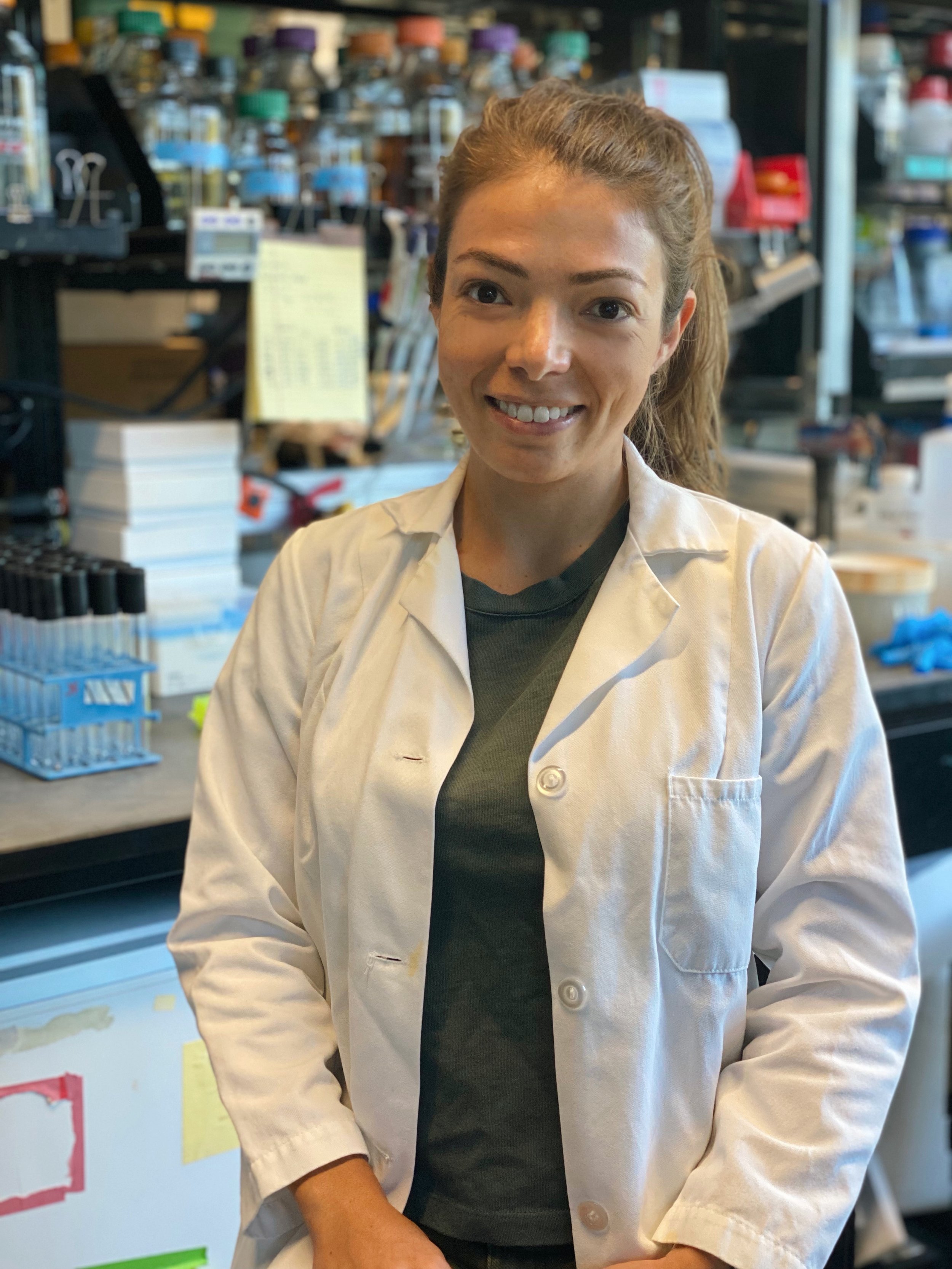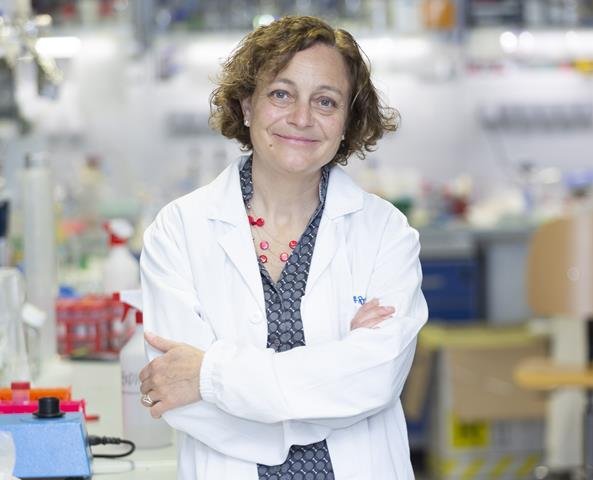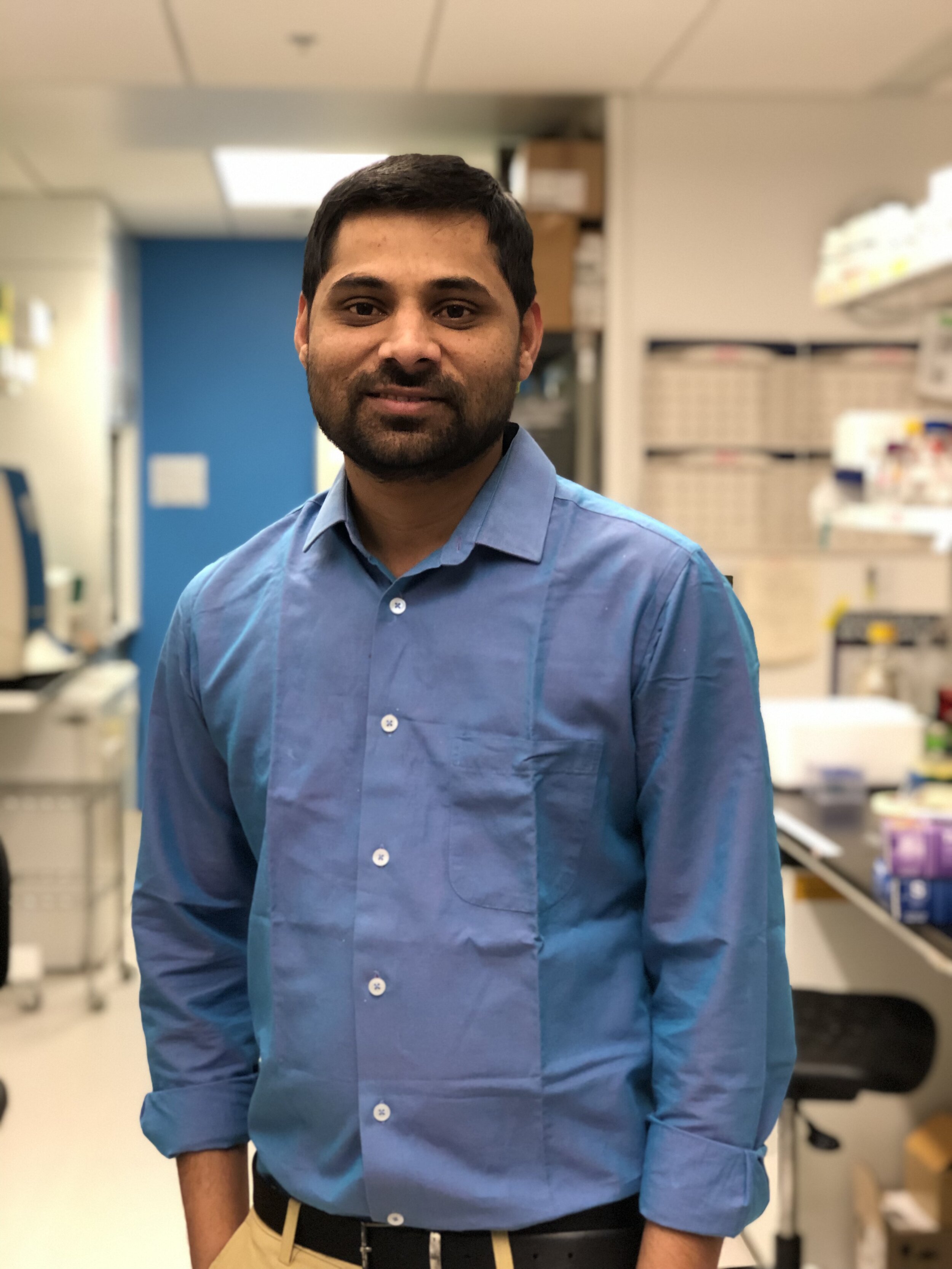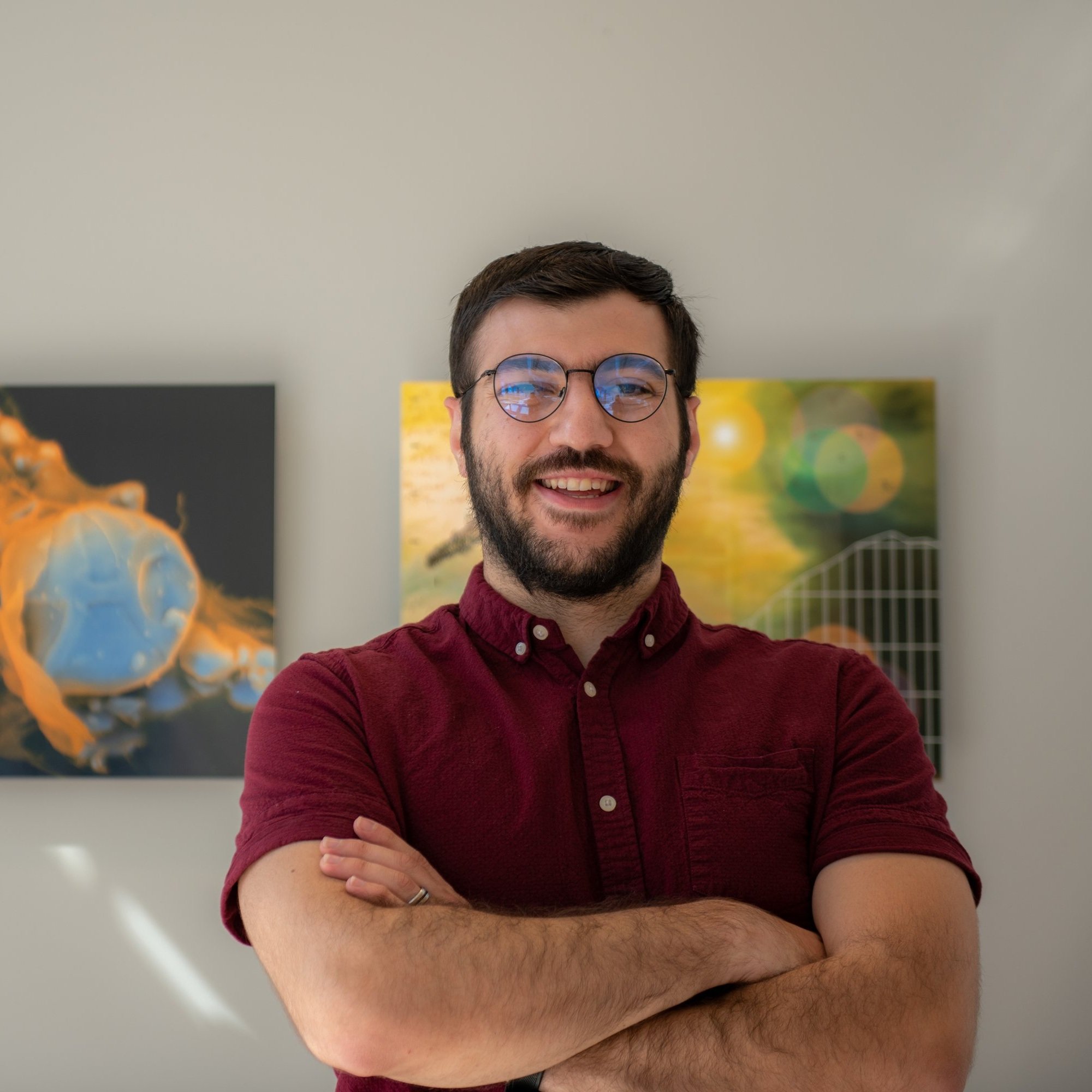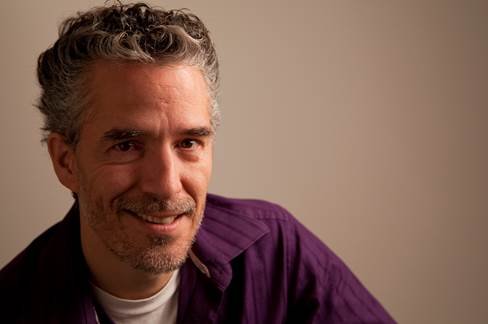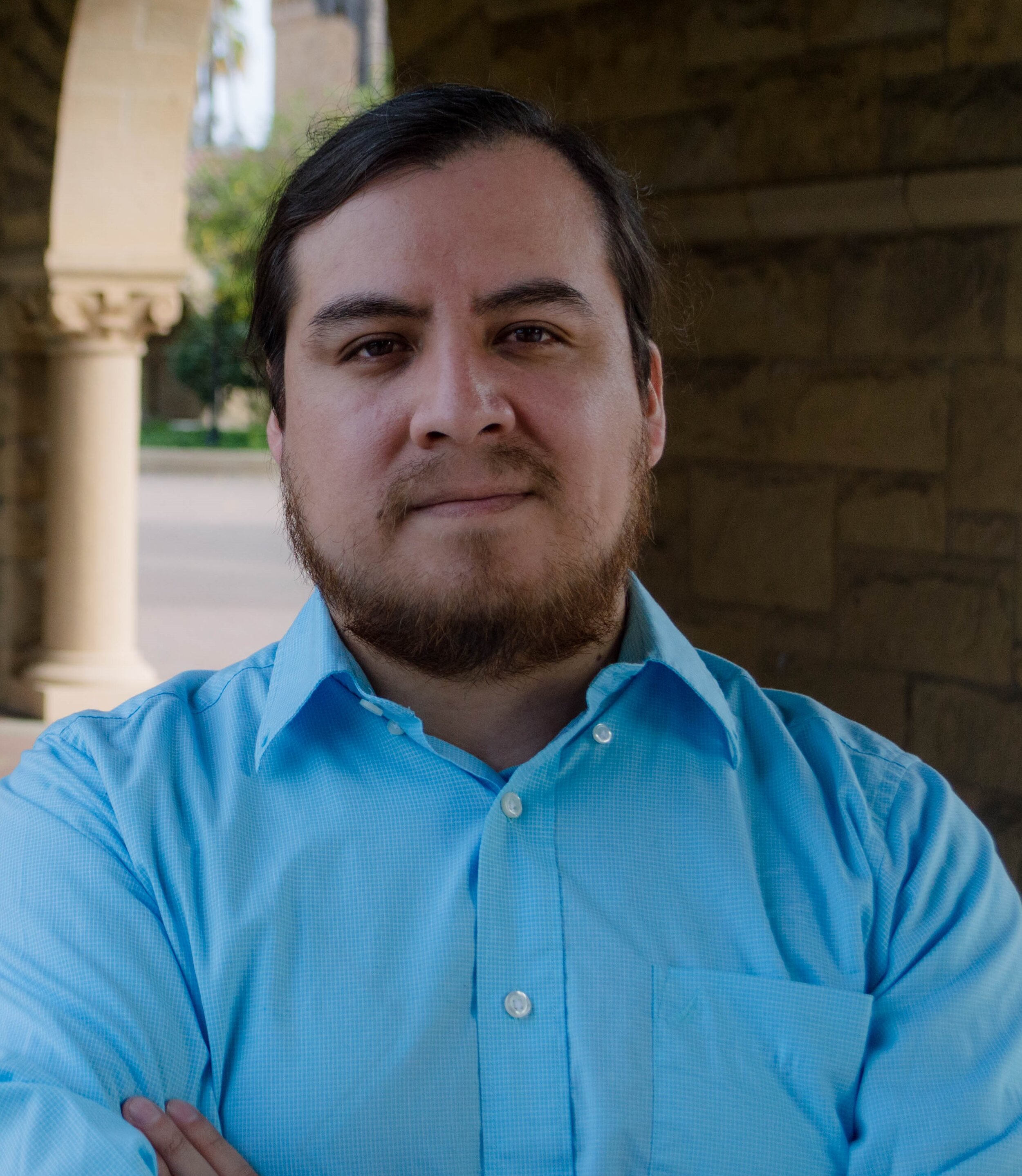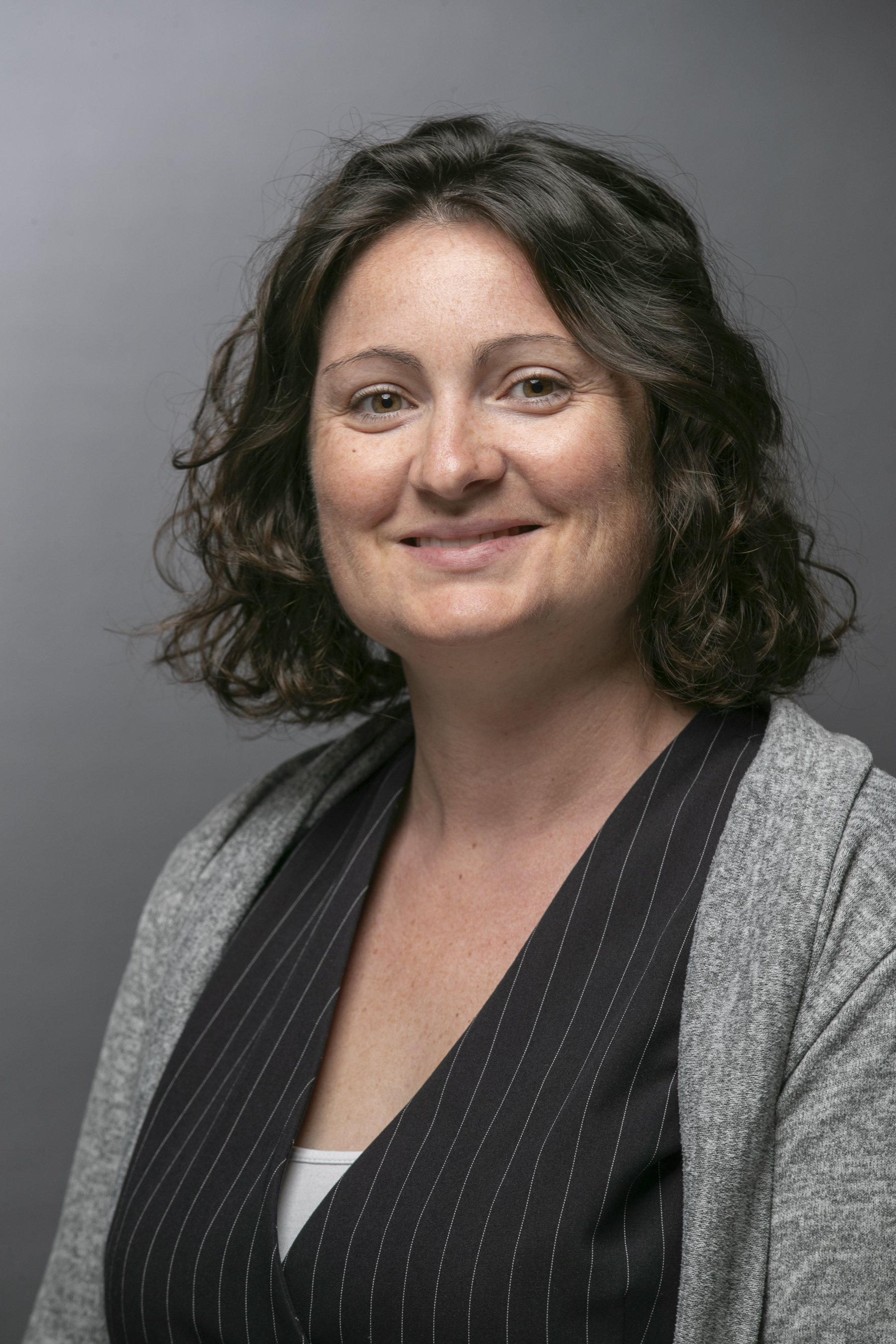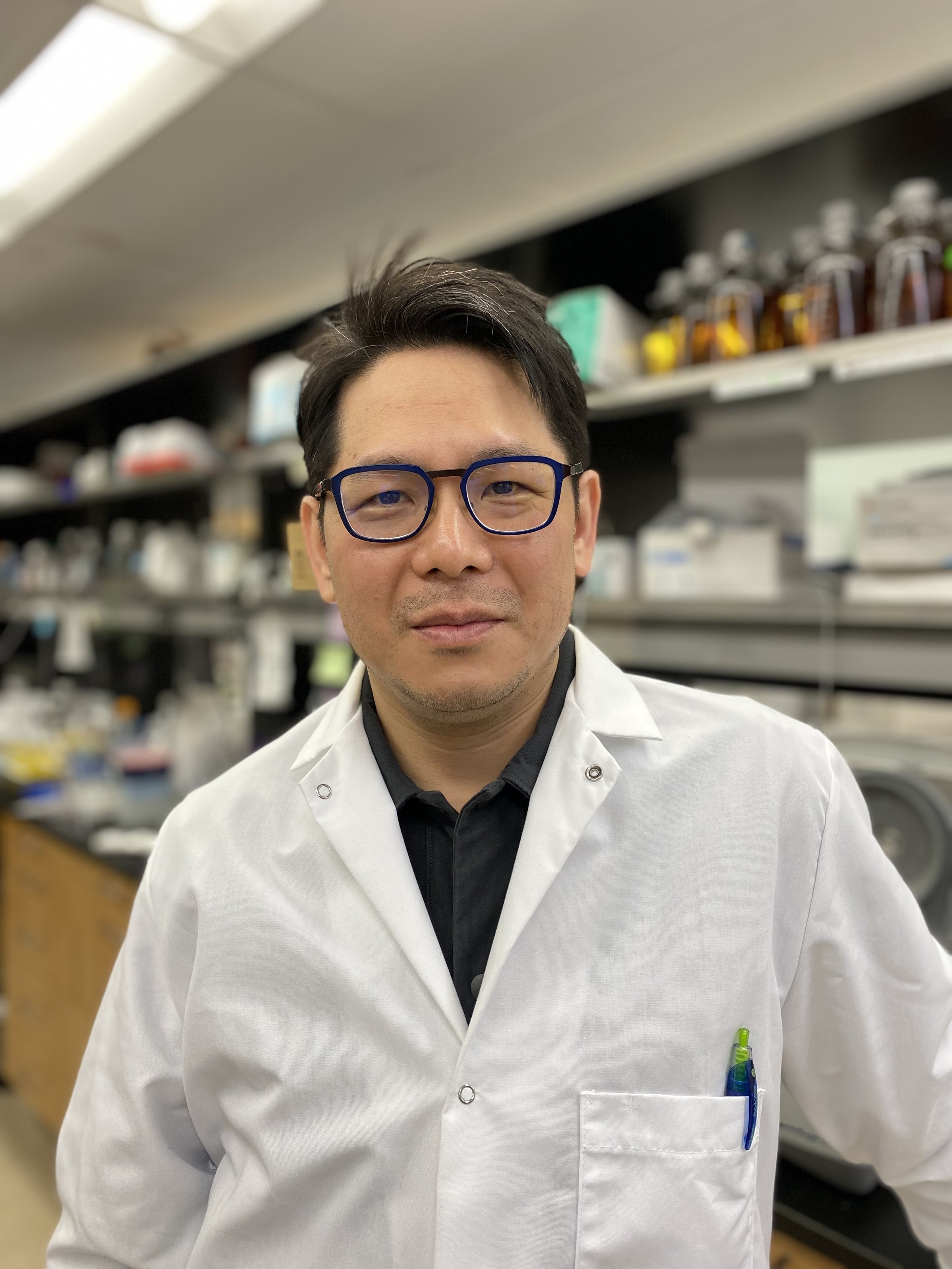FUNDED RESEARCH PROJECTS
The Hereditary Disease Foundation provides funding for research that advances the discovery and development of
treatments for Huntington’s disease (HD) and other brain disorders. We are passionate about finding and funding the most promising, creative and paradigm-changing research. Data generated with HDF grants has allowed many researchers to receive major long-term funding from other sources, including the National Institutes of Health.
Natalia Barbosa, PhD, Stanford University, Palo Alto, CA
Marta Biagioli, PhD, University of Trento, Italy
Mariacristina Capizzi, PhD, Paris Brain Institute, France
Jeffrey Carroll, PhD, University of Washington
Katherine Croce, PhD, Columbia University Medical Center, New York
Amit Laxmikant Deshmukh, PhD, The Hospital for Sick Children (SickKids), Toronto, Ontario, Canada
Hassan Fakih, PhD, University of Massachusetts Chan Medical School
Steven Finkbeiner, MD, PhD, Gladstone Institutes; University of California, San Francisco
Terence Gall-Duncan, PhD, The Hospital for Sick Children (SickKids), Toronto, Ontario, Canada
Michelle Gray, PhD, with Marissa N. Dean, MD, and Steven Pogwizd, MD, University of Alabama at Birmingham
Carolina Gubert, PhD, The Florey Institute of Neuroscience and Mental Health/University of Melbourne, Australia
Joseph Hamilton, PhD, University College London (UCL) Institute of Neurology, United Kingdom
Rachel J. Harding, PhD, University of Toronto, Ontario, Canada
Ryan Hildebrandt, PhD, University of Florida
Ali Khoshnan, PhD, University of Southern California
Hyeseung Lee, PhD, Picower Institute for Learning and Memory, Massachusetts Institute of Technology, Cambridge
Srivathsa Magadi, PhD, Linköping University, Sweden
Tamara Maiuri, PhD, McMaster University, Hamilton, Ontario, Canada
A. Jenny Morton, PhD, ScD, FRSB, University of Cambridge, England
Christopher Pearson, PhD, The Hospital for Sick Children (SickKids), Toronto, Ontario, Canada
Devon Pendlebury, PhD, University of California, Irvine
Piere Rodriguez-Aliaga, PhD, Stanford University, Palo Alto, CA
Sophie St-Cyr, PhD, Children's Hospital of Philadelphia, University of Pennsylvania
Partha S. Sarkar, PhD, University of Texas Medical Branch at Galveston
Chiara Scaramuzzino, PhD, Grenoble Institut des Neurosciences, France
Sridhar Selvaraj, PhD, Stanford University, Palo Alto, CA
Joan Steffan, PhD, University of California, Irvine
Andrew F. Teich, MD, PhD, New York Brain Bank, Columbia University Irving Medical Center, NY
Ray Truant, PhD, McMaster University, Ontario, Canada
X. William Yang, MD, PhD, Semel Institute and David Geffen School of Medicine, University of California at Los Angeles
Andrew S. Yoo, PhD, Washington University School of Medicine, St. Louis, MO
Natalia Barbosa, PhD
Mentor: Judith Frydman, PhD
Institution: Stanford University, Palo Alto, CA
Project Title: Linking proteostasis and mitochondrial dysfunction in Huntington’s disease
2022 Nancy S. Wexler Young Investigator Prize Recipient
A prominent feature of Huntington’s disease is the formation within neurons (brain cells) of large protein clumps which participate in neuronal break down. However, it remains unclear just how these protein clumps impair essential cellular components, for example, mitochondria, which are essential for energy metabolism and signaling processes within neurons. Nor do we know how the clumps might interfere with proteostasis, the process that oversees protein synthesis, folding, and degradation within cells. We do know that disrupting proteostasis could lead to the breakdown of multiple cellular processes. Dr. Barbosa investigates, on a molecular level, the connections between mitochondrial collapse and proteostasis in HD across biochemical, genetic, and structural fronts. Understanding these connections may change the way we think about Huntington’s disease, potentially opening up new strategies for effective therapeutic interventions.
Marta Biagioli, PhD
Institution: University of Trento, Italy
Project Title: A circular RNA molecule to modify Huntington's disease phenotypes
No successful disease modifying treatments are currently available for Huntington’s disease. However, researchers worldwide are pursuing strategies to lower levels of the mutant huntingtin protein and seeking methods to influence the rate of progression of the disease. To that end, Dr. Biagioli's project investigates the function of circHTT, a novel circular RNA molecule which her laboratory group recently discovered. This circular RNA is produced from the same genetic region that is altered in HD. CircHTT is a very stable RNA molecule and its levels are high in the brain and are strongly increased in the presence of the HD mutation. Dr. Biagioli's project seeks to determine how circHTT functions in the cells and in the brain. She will investigate if increasing or decreasing circHTT levels may influence huntingtin protein abundance and deleterious processes in HD. A larger goal is to study the potential of circHTT as a new tool to control huntingtin expression and ultimately to modify destructive cellular features associated with the disease.
Mariacristina Capizzi, PhD
Institution: Paris Brain Institute, France
Project Title: Repairing the communication between brain cells in HD
Our brain is a community of cells – including neurons – organized into a complex network that shares information crucial for our body to function. The information is collected in a “hub” (called the Axonal Initial Segment) located at the entrance of the axon – a cable-like structure extending out from the body of the neuron. Here information is loaded like cargo onto “railways” called microtubules to travel over long distances to its target destination. Normally only cargos of a specific size capable of traveling at sufficient speed are allowed onto these railways. Dr. Capizzi hypothesizes that, in Huntington’s disease, the rails and the hub become damaged so that the cargos are loaded but travel too slowly. The information gets mixed up and does not properly reach its target. Dr. Capizzi will unravel how the hub organization and function are altered in Huntington's disease.
Jeffrey Carroll, PhD
Institution: University of Washington
Project Title: Exploring the Entire Intact Huntingtin Genetic Message in Human Brains
The gene that codes for huntingtin is incredibly long. To study the gene in the brain, it would typically need to be cut up into little fragments to fit the specifications of sequencing machines. New technologies and machines are now available that don’t require the gene to be cut up first. In this project, Dr. Carroll will undertake the first-ever examination of the huntingtin gene in Huntington’s disease brain samples using this modern technology. This information will tell us how the entire unfragmented gene is connected and if there are certain parts of the gene that are impaired or are unique to people with HD. Dr. Carroll’s collaborators in the Valdmanis lab performed a similar analysis in Alzheimer’s disease brain samples and made surprising findings about how the genes are organized. Dr. Carroll is excited to apply this same analysis to HD as this information can lead to the design of new drugs for HD.
Katherine Croce, PhD
Mentor: Ai Yamamoto, PhD
Institution: Columbia University Medical Center, New York
Project Title: Clearing Aggregates to Treat Huntington's Disease
To maintain their health and function, cells are continuously recycling debris and structures that are no longer needed. In neurodegenerative disorders such as Huntington’s disease, this process is slowed because the disease-causing mutation results in the creation of more debris than the cell can normally handle. Previous work by Dr. Croce in the Yamamoto lab identified a way to help cells overcome this problem by increasing levels of a protein known as Alfy. Dr. Croce has devised a new way to increase Alfy levels that has the potential of being used as a therapeutic. This approach will be tested in mice that model HD to determine if this new strategy can be used to either slow or reverse the disease in mice that are already showing symptoms.
Amit Laxmikant Deshmukh, PhD
Mentor: Christopher E. Pearson, PhD
Institution: The Hospital for Sick Children (SickKids), Toronto, Ontario, Canada
Project Title: Role of FAN1 and MLH proteins as modifiers of the CAG repeat mutation in Huntington’s disease
Ongoing CAG expansions in the brains of people born with the expanded huntingtin gene are thought to drive disease age of onset and the rate of symptom progression, such that arresting or reversing these continuing expansions may be a therapeutic avenue. Two DNA repair proteins, FAN1 and MLH1, appear to play an important role in determining age of onset and disease progression. Both modifiers influence continuing CAG expansions, with FAN1 causing their suppression and MLH1 causing their intensification. Dr. Deshmukh aims to determine how FAN1 and MLH1, which interact as a complex, can have opposing effects on CAG expansions. Understanding the role of these modifiers may help guide therapeutic targeting to delay age of onset or slow Huntington’s disease progression.
Hassan Fakih, PhD
Mentor: Anastasia Khvorova, PhD
Institution: University of Massachusetts Chan Medical School
Project Title: Developing nucleic acid nanoparticles for improved RNAi therapeutics to treat Huntington’s disease
Small interfering RNAs (siRNAs) are an emerging class of drugs that target disease-causing RNA for degradation in a sequence-specific manner. Such targeting is promising for hereditary diseases, where we want to deactivate (or "silence") the disease-causing protein encoded by a specific gene. Unfortunately, siRNAs face challenges when injected into the body, as they are unstable and not delivered to their target organ/cells. However, recent advances have led to the first approvals of siRNA drugs, in this case drugs that target hereditary diseases in the liver. This success is due to the use of highly specific targeting ligands and nanoparticles capable of protecting and delivering the drug to the liver. Dr Fakih, with the Khvorova lab, plans to develop and optimize new nanoparticles capable of delivering siRNA drugs beyond the liver, specifically to the brain.
Steven Finkbeiner, MD, PhD
Institution: Gladstone Institutes; University of California, San Francisco
Project Title: Investigation of Genetic Modifiers in Huntington’s Disease Age of Onset
Huntington’s disease is caused by a CAG repeat expansion in the huntingtin gene. However, other genes also contribute to the loss of brain cells typically observed in HD and likely impact the age when symptoms begin to show,. To identify genetic changes, called variants, that may modify the age of onset in HD, Dr. Finkbeiner and his team analyzed the genetic makeup of eleven HD families that displayed large variation in age of onset. They found variants in genes that regulate biological functions that promote the clearance of damaged or unwanted proteins. The variants in these regulators may be modifying the age of onset. Dr. Finkbeiner’s team evaluated one of these regulator genes (OTUD3) and hypothesizes that it influences protein clearance and other biological functions impacting neurodegeneration and is associated with delayed age of symptom onset. In this project, he will perform a deep assessment of OTUD3 and investigate other regulator genes that were identified as modifying the age of onset in HD.
Terence Gall-Duncan, PhD
Mentor: Christopher E. Pearson, PhD
Institution: The Hospital for Sick Children (SickKids), Toronto, Ontario, Canada
Project Title: Reversing the expansion mutation that causes Huntington's disease
The mutation causing Huntington’s disease, a piece of DNA which repeats too many times, is very unusual. If DNA is like an instruction manual that tells our cells how to make proteins, DNA with the HD mutation is like a misprinted book with one of the pages repeated over and over and over again. When a neuron (brain cell) uses these misprinted instructions, it creates a toxic mutant protein. Dr. Gall-Duncan is characterizing and assessing a small molecule which finds misprinted repeating pages and removes them, leaving behind properly printed instructions and in effect, undoing the mutation. When HD mouse models are treated with this molecule, they become less anxious and have better motor functions. Their neurons produce fewer toxic protein clumps and other features of neurodegeneration (like DNA damage). Dr. Gall-Duncan and the Pearson laboratory believe there is therapeutic potential in this exciting small molecule.
Michelle Gray, PhD
With Marissa N. Dean, MD
And Steven Pogwizd, MD
Institution: University of Alabama at Birmingham
Project Title: Heart problems in Huntington’s disease
There is increasing data to suggest that heart problems may exist in people with Huntington’s disease. This finding is perhaps not surprising given that the huntingtin protein is present throughout the body and in most organ systems, including the heart. However, there is scarce data on cardiac dysfunction in HD. Dr. Gray has recently shown that HD mice display deficits in the cardiac conduction system that controls the rhythm of the heartbeat. This discovery is supported by a recently published retrospective analysis of short-term electrocardiograms of people with HD that also revealed changes in the cardiac conduction system. Abnormalities included changes to the hearts’ rhythm that could leave people with Huntington’s disease susceptible to sudden cardiac arrest. Dr. Gray and her colleagues will perform further analyses of people with HD to determine the extent of cardiac abnormalities, assess in greater depth the rhythm changes, and determine whether structural changes exist.
Carolina Gubert, PhD
Mentor: Anthony Hannan, PhD
Institution: The Florey Institute of Neuroscience and Mental Health/University of Melbourne, Australia
Project Title: Targeting the gut bugs in Huntington's disease: Identifying novel therapeutic opportunities
This project was inspired by increasing evidence that bugs inhabiting the gut influence brain function and dysfunction, and that the gut microbial community is abnormal in mice and people with Huntington’s disease. It has also been shown that the imbalanced gut bacterial profile observed in individuals carrying the HD gene is associated with lower cognitive performance and poorer clinical outcomes. In HD mice, Dr. Hannan’s lab recently showed that this phenomenon appears even before motor symptoms. However, they do not yet fully understand the mechanisms mediating this imbalance nor do they know whether an intervention that returns the community of bugs towards a normal profile might be therapeutic. This project will address these important questions in HD mice by using environmental, microbial and pharmacological interventions targeting the gut microbial imbalance and hopefully ameliorating brain dysfunction. This project may facilitate future development of new treatments for people with HD.
Joseph Hamilton, PhD
Mentor: Sarah J. Tabrizi, FRCP, PhD, FMedSci
Institution: University College London (UCL) Institute of Neurology, United Kingdom
Project Title: Exploring the Role of the PMS1 Gene in Huntington's Disease
Small genetic variations in a gene called PMS1 determine the age when someone with the gene for Huntington’s disease begins showing movement issues, but we do not know why this occurs. PMS1 may cause additional CAG repeat expansion within the huntingtin gene, leading to a more toxic Huntingtin protein. In this project, Dr. Hamilton will measure CAG repeats in cells derived from people with HD after reducing PMS1 levels to establish whether PMS1 is involved. Dr. Hamilton will also assess PMS1 to identify specific regions of the gene that are required for this CAG expansion to take place. Through a collaboration with Rgenta Therapeutics, cells will also be treated with drugs known to reduce levels of PMS1, which could be the first step in providing patients with a novel disease-modifying treatment.
Rachel J. Harding, PhD
Institution: University of Toronto, Ontario, Canada
Project Title: Investigating How the Huntington's Disease Protein Interacts with Genetic Material
Evidence is accumulating for a role of the Huntingtin protein in processes involving genetic material in our cells. Dr. Harding and colleagues have shown that Huntingtin directly interacts with a type of genetic message molecule called RNA. There is also evidence that expanded Huntingtin that causes HD may be defective for these RNA interactions, which could be a factor as to why nerve cells in people with HD stop working so well. Dr. Harding identified specific RNAs that bind to Huntingtin and will now determine how well they bind to the normal and expanded HTT protein. Using cutting-edge microscopes, she previously visualized the Huntingtin protein at high resolution and will now visualize how it interacts with specific RNAs. Her results will provide insights as to how the normal and expanded versions of the Huntingtin protein can, or cannot, interact with the RNAs, shining a light on the role of this elusive protein in health and disease.
Ryan Hildebrandt, PhD
Mentor: Eric T. Wang, PhD
Institution: University of Florida
Project Title: Investigating Neuron Transport Issues in Huntington’s Disease
One function of the Huntingtin protein is transporting material around highly complex cells in the brain, called neurons. This process is important for neuronal survival due to impacts in the nucleus, the central area of the cell where genetic material is housed, and the distant branches of neurons far away from the nucleus, which are critical for cell-to-cell communication. In Huntington's disease, the ability to transport cellular components between these locations appears to be affected both by decreased amounts of normal Huntingtin protein and increased amounts of mutated Huntingtin protein. However, we do not fully understand which contributes more to altered cellular transport, nor do we know all genes that are affected by transport deficits in Huntington’s disease. Dr. Hildebrandt aims to create systems to track the production of gene products in the nucleus and transport of these products to the outer branches of neurons. By reducing levels of normal or mutated huntingtin protein, he will determine which has a larger impact on transport and function. Greater knowledge on this process could aid in the design of future therapies.
Ali Khoshnan, PhD
Institution: University of Southern California
Project Title: Studies on Gut Defects in Huntington’s Disease
The gene that causes Huntington’s disease is expressed in every cell in the body. The human gut lining is made up of various types of cells that control digestion, nutrient absorption, keep harmful bacteria away, and communicate with other organs including the brain. The gut lining renews itself every 4-7 days for optimal function and specialized master cells, known as stem cells, produce different types of cells as needed. People with the gene that causes Huntington’s disease may have a defective gut lining, but research is lacking. Dr. Khoshnan will test whether the mutation that causes HD impairs gut lining renewal and produces sick cells. A sick gut could negatively affect the brain since optimal brain function requires a healthy gut to produce the essential nutrients, growth factors and neuromodulators, and to prevent inflammation. A prolonged unhealthy gut will damage brain cells and may kill them. By understanding the situation in the gut of people with the gene that causes HD we may learn how gut defects contribute to disease onset and progression and may help to develop therapies and specific diets to make the gut healthy again.
Hyeseung Lee, PhD
Mentor: Myriam Heiman, PhD
Institution: Picower Institute for Learning and Memory
Massachusetts Institute of Technology, Cambridge
Project Title: Therapeutic targeting of Huntington’s disease with key regulators of innate immunity
In Huntington’s disease, mutant huntingtin protein (mHTT) is expressed everywhere in the body. However, specific types of cells within the brain’s cortex and basal ganglia are more likely to die than other types of cells or than cells elsewhere in the body. This circumstance highlights the importance of understanding how each of these different types of cells respond to mHTT.
Dr. Lee and colleagues recently discovered a cell type-specific activation of innate immune signaling that they believe leads to enhanced neuronal vulnerability in HD. They hope to identify key genes that activate this immune signaling and test their therapeutic potential in Huntington’s disease.
Srivathsa Magadi, PhD
Mentor: Walker Jackson, PhD
Institution: Linköping University, Sweden
Project Title: Modulate immune cells of the brain to alleviate Huntington’s disease
Microglia, the immune cells of the brain, have both neuroprotective and neurotoxic potential. A fine balance between these opposing capacities is disrupted in brain diseases. Dr. Magadi and colleagues found that the brains of people with Huntington’s disease produce a specific form of a ribosomal protein, Rps24, which the brains of individuals without Huntington’s do not. They hypothesize that this form of the protein is used by microglia to help the brain fight the disease. To test this hypothesis, Dr. Magadi will use cells in a dish to understand the molecular purpose of this version of the Rps24 protein. He will also use genetically engineered mouse models that enable researchers to control the production of the potentially beneficial version of Rps24 in the brain. If this form of the Rps24 protein can alter the course of the disease in mouse models, such findings can potentially be used to tailor drugs that will elicit similar effects in humans.
Tamara Maiuri, PhD
Institution: McMaster University, Hamilton, Ontario, Canada
Project Title: Can We Use DNA Damage Levels in Huntington’s Disease Patient Blood to Guide Clinical Trials?
One of the biggest goals in Huntington’s disease research is to reach a place where we can start treatment before symptom onset. But how can we test if a drug works when we can’t use symptoms as a measurement? One thing known to happen before the onset of symptoms is increased damage to DNA. Dr. Maiuri will determine whether, in asymptomatic individuals carrying the expanded HD gene, increased DNA damage can be detected using small blood samples from a finger prick. DNA damage will first be measured using the gold standard method, called a comet assay. These results will be compared to another method, called Repair-Assisted Damage Detection, which researchers in the Truant lab, where Dr. Maiuri works, have found to be even more sensitive than the comet assay. If successful, this non-invasive testing process can be streamlined so that any company testing a new HD treatment can easily monitor whether their drug is working without the need to wait for symptom onset.
Jenny Morton, PhD, ScD, FRSB
Institution: University of Cambridge, England
Project Title: Can core body temperature be used as a readout for changes in metabolism in Huntington’s disease?
It has long been suspected that changes in metabolism are important in Huntington’s disease because so many patients become very thin. But metabolism is complex and difficult to study in humans, so evidence for metabolic defects in people with HD is scarce. We know from a metabolomics study that dozens of metabolites are abnormal in presymptomatic HD sheep. In this project, Dr. Morton will use thermal imaging of sheep to see if core body temperature that is directly related to metabolism is different in HD sheep compared to normal sheep. She will then determine if temperature regulation deteriorates further in the HD sheep as the disease progresses. If this is the case, then core body temperature could be used as a non-invasive ‘surrogate’ biomarker to track metabolic changes in HD.
Christopher E. Pearson, PhD
Institution: The Hospital for Sick Children (SickKids), Toronto, Ontario, Canada
Project Title: Developing Specific Antibodies to Explore RPA, a Modifier of HD
Huntington’s disease shows varying age-of-onset and rate of progression, which is regulated by ongoing CAG expansion in the gene that causes HD in the brain. The HD gene without the CAG expansion could be the sentence “THE CAT ATE THE FAT FAT RAT”. The expansion would be “THE CAT ATE THE FAT FAT FAT FAT FAT RAT”. As the person ages, the expansion continues, “THE CAT ATE THE FAT FAT FAT FAT FAT FAT FAT RAT”. This causes earlier symptom onset and worse disease. Dr. Pearson’s long-term goal is to put the “RAT” on a diet, where fewer “FAT” units would be a treatment to delay disease onset or progression. His project focuses on a protein, RPA4, that forces the ongoing CAG expansion in the brains of affected individuals. Understanding how RPA4 regulates this expansion will reveal how we can stop it in a beneficial manner, that is reducing “FAT” units. Little is known about RPA4 due to an absence of tools. In this project, Dr. Pearson will create the tools to learn more about RPA4 in the brains of people with HD. Specifically, using these newly-developed tools on patient brains donated to the lab of Dr. Richard Faull, New Zealand, a collaborator of Dr. Pearson.
Devon Pendlebury, PhD
Mentor: Leslie M. Thompson, PhD
Institution: University of California, Irvine
Project Title: Investigating How DNA Damage Repair Is Faulty in Huntington’s Disease
DNA contains the information to make all the proteins that cells in the body need to carry out their day-to-day function. The maintenance of DNA in brain cells is important for cell survival, longevity, and function. In healthy cells, breaks in DNA strands are normal and occur frequently. The broken strands are readily repaired to prevent mutations, damage, and premature cell death. In Huntington’s disease, this repair pathway does not work correctly, leading to the accumulation of DNA damage in the brain cells affected by the disease. A large complex of proteins is responsible for repairing DNA damage and the activity of this complex gets derailed in HD brains. The incorporation of the expanded Huntingtin protein into the DNA repair complex negatively alters the function and associations of the complex. Dr. Pendlebury will study the interactions between these proteins to identify mechanisms to boost DNA repair activity.
Piere Rodriguez-Aliaga, PhD
Mentor: Judith Frydman, PhD
Institution: Stanford University, Palo Alto, CA
Project Title: How disease-causing mutations in the Huntingtin protein render it toxic
The risk of developing Huntington’s disease is tightly linked with the length of a specific region within the huntingtin protein. Genetic mutations can make this region longer than normal, rendering the protein toxic to neurons. The mechanism behind this length-dependent toxicity remains unknown, mainly because the huntingtin protein’s highly disordered and aggregation-prone nature prevents most current experimental methods from obtaining high-resolution images of its structures. To circumvent these technical barriers, Dr. Rodriguez-Aliaga is using a new Nobel Prize-winning technology to study one huntingtin molecule at a time, a method which allows access to structural information about pathogenic and non-pathogenic huntingtin variants with unprecedented detail.
Using this approach, he has found previously unreported structural differences between the pathogenic and non-pathogenic huntingtin variants, differences which may explain how disease-causing huntingtin mutations lead to HD. He is currently studying how huntingtin’s structure is affected by chemical modifications commonly found in brains of HD patients, and other proteins and drugs known to bind huntingtin and inhibit or decrease its toxicity.
Sophie St-Cyr, PhD
Mentor: Beverly L. Davidson, PhD
Institution: Children's Hospital of Philadelphia, University of Pennsylvania
Project Title: Understanding the underlying mechanism of the heart pathology in Huntington’s disease
Heart disease is the second most common cause of mortality in Huntington’s disease and people with HD present an increased incidence of heart failure and a smaller than normal heart. Addressing this heart pathology may improve the longevity and quality of life for people with HD. Dr. St-Cyr will explore the contribution of two RNA-binding proteins (RBPs) in HD-associated cardiac pathology. RBPs are responsible for regulating the RNA splicing of hundreds of genes, a phenomenon by which different proteins are produced from the same gene and serve different functions. CELF1 is responsible for heart splicing during development, while MBNL1 does so in adulthood. She hypothesizes that an imbalance between these two RBPs is in part responsible for HD heart pathology. To test this, Dr. St-Cyr will identify all of the RNA isoforms (protein variants) abnormally expressed in the heart of an HD mouse model and determine whether increasing MBNL1 expression ameliorates heart size and contractile function.
Partha S. Sarkar, PhD
Institution: University of Texas Medical Branch at Galveston
Project Title: Loss of Genome Integrity in Huntington's Disease
The Huntingtin protein is enigmatic because it normally protects brain cells, but the same protein triggers toxicity in brain cells when it harbors the expanded CAG repeat tract that causes Huntington’s disease. Dr. Sarkar’s group recently reported that the Huntingtin protein forms a complex with an enzyme that repairs DNA, called PNKP. The Huntingtin-PNKP complex corrects damage to DNA that normally and naturally occurs. This allows the cell to maintain the integrity of genetic material. However, expanded Huntingtin impairs the activity of the Huntingtin-PNKP complex, resulting in DNA damage accumulation in HD. Dr. Sarkar’s lab discovered that Huntingtin also assembles a DNA repair complex with PNKP within the powerhouse of the cell, the mitochondria. This complex corrects DNA damage to preserve the integrity of the mitochondria’s genetic material, while expanded Huntingtin reduces the complex activity, resulting in the persistence of DNA damage, and mitochondrial dysfunction in HD. Dr. Sarkar aims to understand the contributions of Huntingtin to DNA repair in mitochondria. Successful completion of his work will determine how Huntingtin maintains the integrity and function of genetic material of the mitochondria, and how expanded Huntingtin impedes mitochondrial DNA repair and function
Chiara Scaramuzzino, PhD
Institution: Grenoble Institut des Neurosciences, France
Project Title: Restoring Organelle Trafficking to Rescue Huntington’s Disease
2023 Nancy S. Wexler Young Investigator Prize Recipient
Communication between two key brain structures, the cortex and striatum, is defective in Huntington’s disease. These brain regions can send each other molecular messages, called neurotropic factors, that aid in the survival of brain cells. However, the expanded form of Huntingtin alters neurotropic factor signals from the cortex to the striatum, causing the brain cells in the striatum to die. Dr. Scaramuzzino identified that Huntingtin also conveys survival signals from the striatum back to the cortex to maintain brain communication. Her work uncovered that this striatum-to-cortex communication loop is impaired in HD. She aims now to improve the communication between these two brain regions by restoring Huntingtin’s function during the transport of neurotrophic factors. To do this, she hopes to enhance the delivery of these molecular messages by promoting Huntingtin-mediated trafficking to the cortex.
Sridhar Selvaraj, PhD
Mentor: Matthew Porteus, MD, PhD
Institution: Stanford University, Palo Alto, CA
Project Title: Development of a stem-cell based therapy for Huntington's disease
Huntington’s disease is an inherited neurodegenerative disease with no effective disease-modifying treatment. A potential therapeutic approach for HD would be to deliver protective proteins into the brain to prevent the breakdown of neurons (brain cells). Recent studies have shown that stem cell-derived neural cells have moderate therapeutic potential for HD in mouse models. Delivering protective proteins through these stem cell-derived neural cells could be a potential treatment option for humans with Huntington’s as well. In this study, Dr. Selvaraj will test the therapeutic potential of this approach for the delivery of four different protective proteins into HD mouse models. The study will provide a proof-of-concept platform for stem cell-based delivery of therapeutic proteins as a novel treatment approach for HD.
Joan Steffan, PhD
Institution: University of California, Irvine
Project Title: Identification of Huntingtin-dependent cellular trash collection pathways
Dr. Steffan is investigating the normal function of the huntingtin protein in the cell’s trash collection system, a process called autophagy. Huntingtin is involved in helping to target the trash to be transported to a part of the cell, called the lysosome, where it is degraded and recycled. A small protein called ubiquitin carries the tagged trash to its destination. Dr. Steffan is examining the direct interaction between huntingtin and ubiquitin, defining the kinds of trash huntingtin scaffolds, and exploring how this process may be impaired by the HD mutation. Through this approach, she aims to find therapies that may improve mutant huntingtin’s function and slow the progression of the disease.
Andrew F. Teich, MD, PhD
Institution: New York Brain Bank, Columbia University Irving Medical Center, New York
Project Title: Human tissue banking for the Huntington’s disease research community
The New York Brain Bank (NYBB) of Columbia University currently makes available to researchers over 1,000 carefully characterized Huntington’s disease brains as well as other human tissues. A state-of-the-art barcode inventory system, implemented by pathologist and NYBB founder Dr. Jean Paul Vonsattel, tracks the storage and disbursement of all tissue samples.
Dr. Teich aims to broaden the autopsy service to provide researchers with a greater variety of tissues, as well as scanned slides, from individuals who have died with the expanded version of the Huntington's gene and have authorized banking of their tissue. These enriched resources will offer the research community new insights into the disease mechanisms of HD and pave the way towards better treatments and therapies for people living with HD.
Ray Truant, PhD
Institution: McMaster University, Ontario, Canada
Project Title: Imaging huntingtin at DNA sites at the atomic level
Huntington’s disease affects the way neurons (brain cells) respond to DNA damage, interfering with DNA repair and potentially triggering the events that ultimately lead to the disease. In 2017, the Truant lab visualized the recruitment of the huntingtin protein to sites of DNA damage, but huntingtin has no obvious regions known to bind DNA. So what allows huntingtin to interact with DNA, particularly at sites of DNA damage, and how might this interaction initiate HD? It appears likely that huntingtin requires another protein, called Hap40, to bind DNA. Dr. Truant will visualize how the huntingtin/Hap40 complex directly binds to DNA and to polyADP-ribose (PAR), an important signal molecule for DNA repair that has been identified in many brain diseases. He will test various DNA shapes, as well as various types of DNA damage, comparing unexpanded and expanded huntingtin to see how the disease mutation affects the ability to bind DNA. This work will help the field understand when and how the huntingtin protein is recognizing damaged DNA and possibly how it is driving the DNA damage aspect of HD.
X. William Yang, MD, PhD
Institution: Semel Institute and David Geffen School of Medicine, University of California at Los Angeles
Project Title: Probing Huntingtin Binding Protein HAP40 in Cortical Biology and Pathology in Huntington’s Disease
Huntingtin is a large protein that binds to many other proteins. Since Huntington’s disease is caused by the mutated form of Huntingtin, changes in the way the mutant protein interacts with its partners may help explain why certain brain cells are particularly vulnerable in HD while others are spared, and where we could target to prevent or treat HD. HAP40 is a protein that binds to the Huntingtin protein in a one-to-one manner (akin to its best friend) in a cell. Preliminary study from Dr. Yang’s lab found that mutant mice without HAP40 during brain development show remarkable degeneration of brain cells called neurons in the cortex, a brain region critical for cognition, emotion, and motor control. He will now study the normal role of HAP40 in the development of the cortex, and test whether boosting HAP40 levels could reduce symptoms in a mouse model of HD.
Andrew S. Yoo, PhD
Institution: Washington University School of Medicine, St. Louis, MO
Project Title: Increasing resilience against neurodegeneration in Huntington’s disease patient-derived neurons
Huntington’s disease is characterized by massive death of striatal medium spiny neurons (MSNs). Dr. Yoo previously found that reprogramming skin fibroblasts of people with HD to MSNs (HD-MSNs) showed adult onset pathologies, including the formation of huntingtin aggregates and cell death. Building on this work, he recently identified RCAN1 as a gene whose reduced function rescued HD-MSNs from neuronal death. However, it remains unclear how RCAN1 operates at the molecular level to promote HD-MSN degeneration. In this project, Dr. Yoo will investigate the molecular events that emerge as he reduces the function of RCAN1 and enhances HD-MSNs’ resilience in the face of neurotoxicity caused by mutant huntingtin. This work will deepen our understanding of fundamental changes in the cellular state that underlie the increased survival of patient- derived neurons. He also hopes to infer strategies to keep neurons of people with HD from degenerating.

